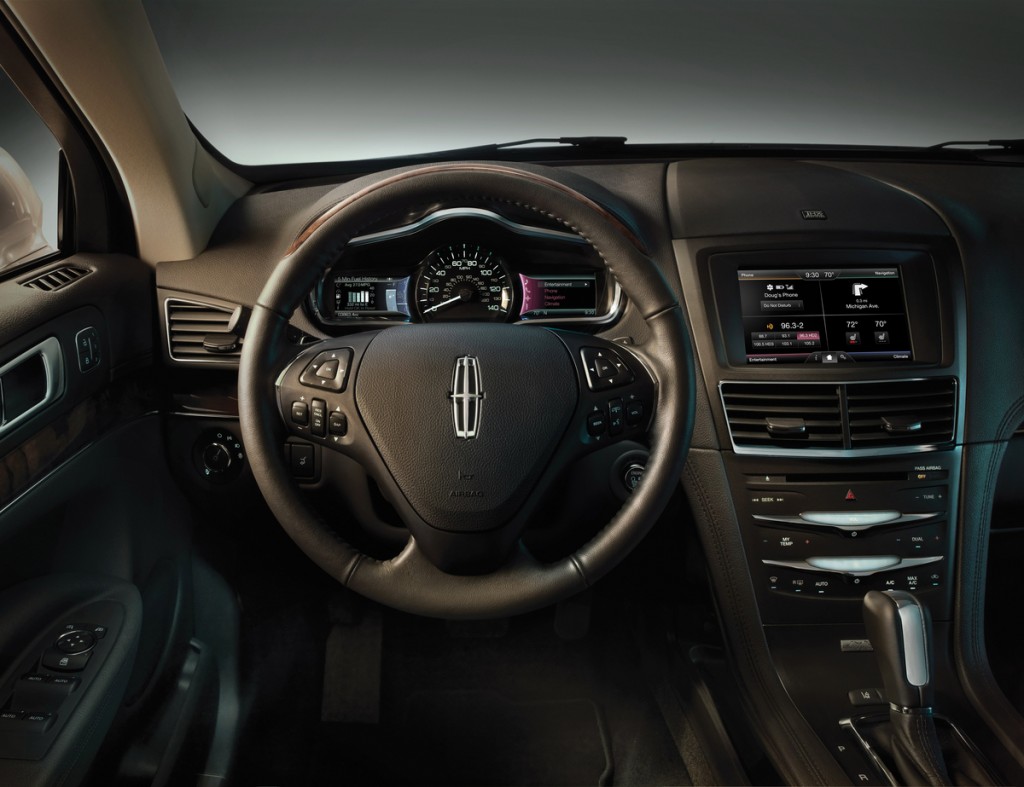
2014 Lincoln MKT
For the most part, cruise control can save a lot of fuel—up to 10 percent, versus foot-on-accelerator driving—by smoothing our driving styles. Yet the more we 'adapt' cruise control to surrounding traffic or more extreme terrain, the more we need to question the way in which it pulls off the basics—maintaining speed, and 'recovering' back to a desired speed when vehicles (or hills) aren't slowing us down.
Virtually all the cruise control systems now on the market (even so-called adaptive cruise controls that set a following distance) are not predictive. They merely push harder on the throttle when speed drops or there's no longer a slower vehicle directly ahead, and ease off when speed rises back to the desired setting.
That's led engineers at Ford to rethink cruise-control behavior. The idea is to eliminate some of the overcompensation that's built into these systems.
With some predictive algorithms and more sophisticated mapping, the Ford engineers hope to soften throttle behavior—and save more fuel—when possible.
Powertrain mapping for Ford predictive cruise control
That means mapping each vehicle's powertrain in greater detail, the engineers explained, and comparing the load on the vehicle (how many people are aboard, or whether there's a headwind), and the steepness of a grade, to the powertrain torque that can and should be applied, for a smooth 'recovery trajectory' if the speed drops.
Fully connected and cloud-based vehicles might know what's up ahead, but based on a vehicle's onboard measurements on powertrain load, accelerometers, and yaw sensors—and the air-mass meter, and any of the numbers that are in a typical powertrain module—the system can make a pretty reasonable guess.
The system looks at those variables, in samples of a few seconds at a time, with a total running memory of less than 55 seconds, and predicts based on recent loading and terrain whether the hill will level off soon, or whether the load is a constant or transient one (one that it thinks might let up soon).
Setting the stage for connected vehicles
It's a clever solution that requires no additional hardware, and the Dynamic Cruise Control that results could be used as a base line for more effective adaptive cruise control, active-safety systems, and in the longer term, autonomous-driving situations.
So if you've gone over a series of small, undulating hills every quarter of a mile or so, the system might 'guess' that there's no need to aggressively increase the throttle, and it will instead wait until the next time it levels off—or even use the downhill.
That makes it quite different than the so-called 'eco' cruise-control modes offered in some vehicles—which merely put a rubber-band-style delay on the throttle response.

2014 Lincoln MKT
“We want to basically optimize the behavior based on knowledge of road conditions,” said Steve Szwabowski, a powertrain controls technical expert at Ford. Looking further into the future, Szwabowski pointed to connected-vehicle technologies as building on these developments, as well as even further into the future, cloud-based solutions.
Five percent improvement in hilly terrain
We sampled the technology briefly in a modified Lincoln MKT large crossover utility vehicle, but the relatively level terrain around Dearborn didn't allow us to get a meaningful impression of the level of change that a driver would feel with such a system.
Engineers claim, tentatively, another 5 percent improvement over existing cruise control systems, in controlled conditions where there are grade variations.
Ultimately, say the engineers involved, the 'dynamic' system views speed and momentum as an investment, letting speed fall somewhat when it's smart to do so, or maintain it when you'd spend more energy catching back up to speed.
One feature that Ford is considering adding with this revised system is a menu selection, through the vehicle's settings menu within MyFord Touch, that would allow you to change the amount of variation (in mph) that the cruise control will allow.
According to Szwabowski, one of the goals of the project is also to fully understand all the tradeoffs involved in allowing that greater variance.
Most to gain in trucks and crossovers
At larger speed variations, which could come into play with vehicle-to-infrastructure (V2I) and vehicle-to-vehicle (V2V) solutions to congestion and autonomous driving, Szwabowski said there's the most to gain.
“What can we do if we start trading off, if we're not quite as specific about maintaining speed?”
Ford won't say exactly which vehicles the technology is headed into, but it's two to three years away from production.
Those involved with the project suggest the gains could be greatest in a larger crossover or truck—perhaps like the upcoming, all-new 2015 Ford F-150—where the vehicle weight and load can vary greatly.
_________________________________________












